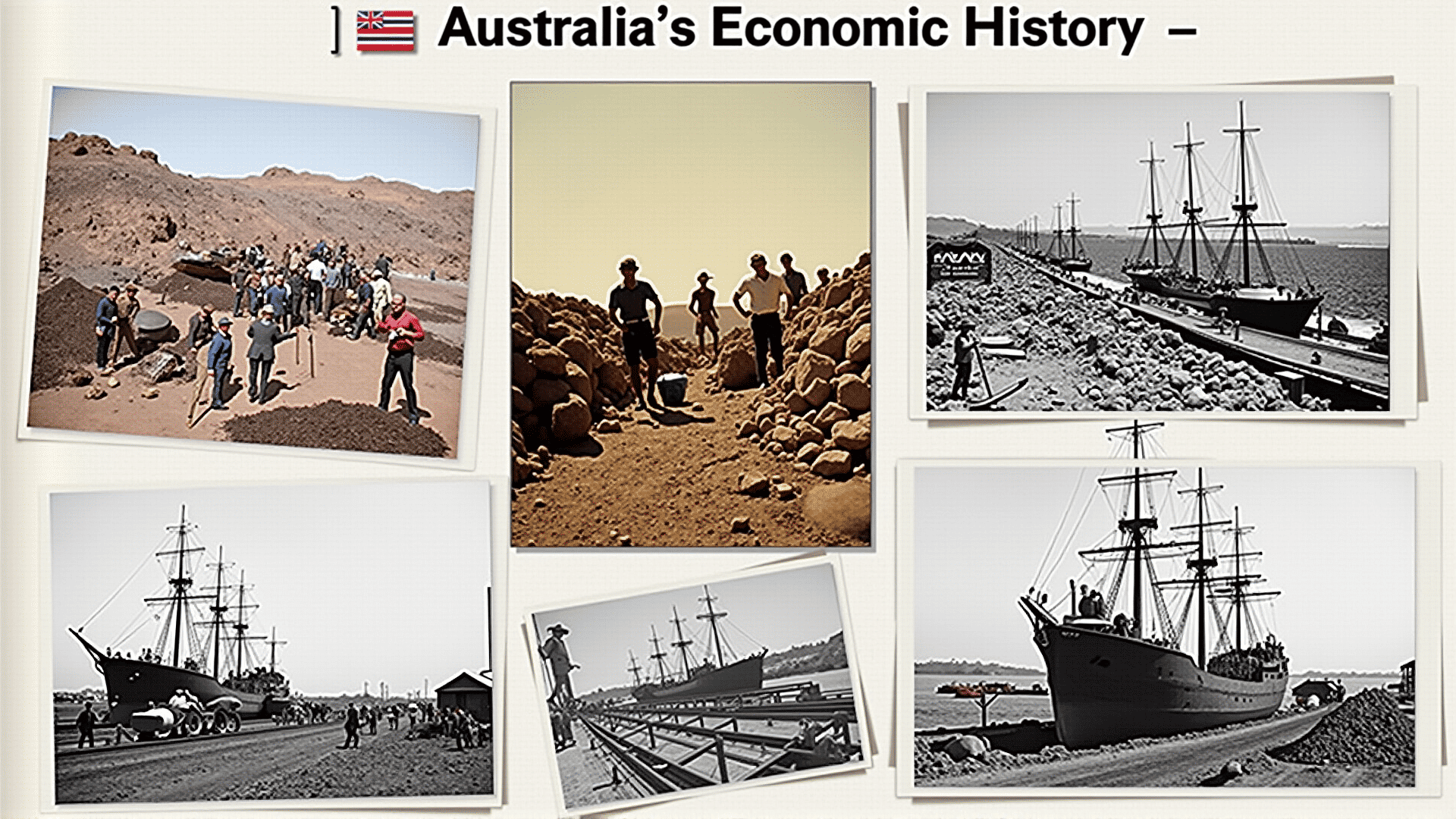Australia's economic history is a remarkable journey that showcases significant transitions and adaptations over the centuries. The continent's economic landscape has been chiefly shaped by three key phases: the colonial roots, the gold rush era, and the modern diversified economy.
In the late 18th century, Australian economic activity was primarily driven by agriculture. With the establishment of the first European settlements in 1788, wool became one of the earliest commodities to boost economic growth. Australia quickly gained a reputation for its fine wool, supplying British mills in the 19th century and thus laying down the foundations of a pastoral economy.
The discovery of gold in the 1850s sparked one of the most transformative periods in Australia's history. This era attracted hundreds of thousands of prospectors from around the globe, eager to find their fortune. The gold rush not only increased the nation's population but also provided capital necessary for new industries and infrastructure development. Through the influx of immigrants and subsequent demand for goods and services, urban centers rapidly expanded, shaping the modern character of cities like Melbourne and Sydney.
As the 20th century unfolded, Australia's economy diversified beyond its reliance on primary industries. World War I and II significantly impacted industrialization. The nation's capabilities were harnessed to support the war effort, leading to greater manufacturing capacity. Post-war, Australia experienced economic growth, buoyed by policies that supported full employment and the development of social welfare systems.
In the latter half of the 20th century, Australia shifted from a protectionist economic policy to one upholding liberalization and globalization. The deregulation of sectors and embrace of technology paved the way for new industries such as mining, which became a powerhouse due to the country’s rich natural resources. The export of minerals and energy commodities, particularly to burgeoning Asian markets, further propelled the economy.
Australia has also been proactive in establishing trade agreements that have facilitated economic resilience and growth. Furthermore, the country's commitment to education and technological advancement continues to play a crucial role in maintaining a competitive edge in the global market.
Today's Australian economy is characterized by its robust service sector, significant resource exports, and an ongoing focus on innovation. It is a testament to the nation's ability to adapt and thrive against the backdrop of global economic shifts. This evolution from colonial outpost to modern powerhouse demonstrates the dynamic nature of Australia's economic history and its promising future.
